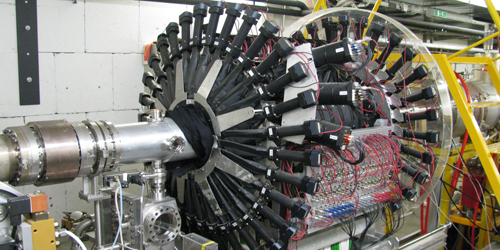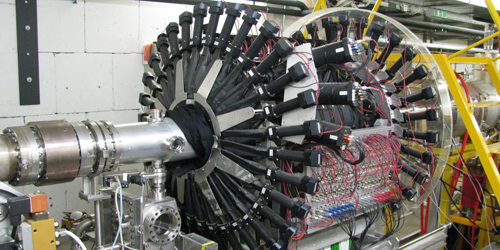Deuterons Spin Together for a Thousand Seconds
The electric dipole moment (EDM) of a fundamental particle or a simple nucleus is believed to be extremely small. One might therefore think that it isn’t worth measuring this quantity. But it is. A nonzero EDM would signal a broken symmetry of nature known as violation, which is required to explain why the Universe has more matter than antimatter. Edward Stephenson from Indiana University, Bloomington, and colleagues have now made a significant stride towards determining the EDM of the deuteron using a deuteron beam circulating in a magnetic storage ring. They have been able to preserve the alignment of the deuterons’ spins for a chunk of time that may be long enough to determine the deuteron’s EDM.
In experiments of this kind, the EDM can be determined by measuring the rotation of the initially aligned spins of the beam particles as they travel around the ring. To obtain a measurement sufficiently accurate to explore violation predicted by theories beyond the standard model, the spin alignment has to be preserved for about 1000 s. But changes in particle speed—associated with position or direction variations among the particles in the beam—lead to a rapid loss of the alignment in the plane of the ring.
Stephenson and co-workers have managed to retain the alignment of deuterons for the required 1000 s, which is 3 orders of magnitude longer than the previous record (obtained for an electron beam). Their success resulted from capturing the beam into a tight bunch to reduce position and direction spread and from shaping the ring’s magnetic field to ensure all of the deuteron orbits around the ring have the same length, despite direction variations.
This research is published in Physical Review Letters.
–Ana Lopes
Ana Lopes is a Senior Editor of Physics.





